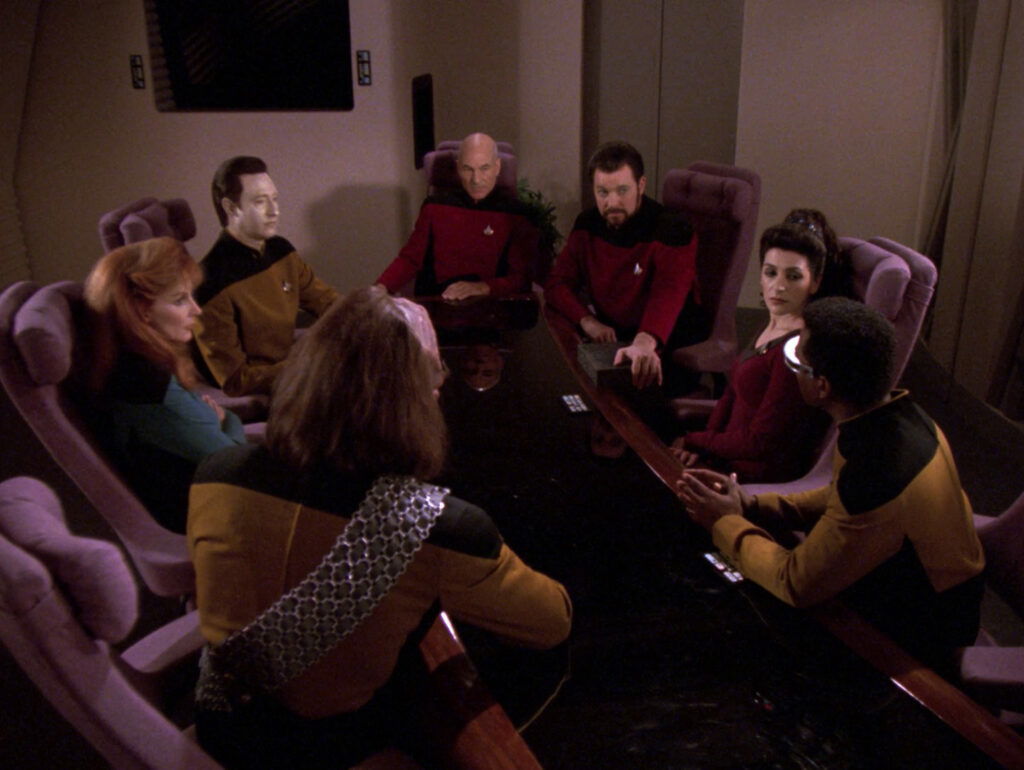Image may be NSFW.
Clik here to view.
Imagine tuning in to watch the week’s episode of Star Trek: TNG and seeing the USS Enterprise-D get annihilated in the opening minutes. Five seasons into the global phenomenon, I am sure fans at the time did not think that the end of the Enterprise would come from the ship blowing up. I’d imagine they thought of an early cancellation like last time.
But the Jonathan Frakes-directed season 5 episode ‘Cause and Effect’ was different and one of those experiments that, thankfully, worked very well. The time loop storyline was something new for the franchise at the time and has since been a staple in every spinoff, but neither Discovery nor Voyager cracked the concept like TNG did.
Star Trek: TNG’s time loop episode stands the test of time three decades later
Clik here to view.

While Star Trek: TNG boldly went where no other show went, there were times when it was obvious that it was a product of its time. Be it the clunky CGI or the cheesy staging, Star Trek of the late ‘80s and ‘90s treads a fine line between dated and nostalgic. However, the season five episode ‘Cause and Effect’ still stands the test of time.
The franchise has explored time loops many times since ‘Cause and Effect’. While Voyager’s season 3 episode ‘Coda’ is interesting and the stakes are high, Voyager tried the concept twice: once with a Time-Turner-esque concept and then with timeline jumping. Maybe it could be the First-Mover bias, but none of them come close to TNG.
Clik here to view.

Jonathan Frakes’ interesting directorial choices, adding subtle differences in each loop, Dr. Beverly Crusher and Data’s planning, and the incredible cold open of the Enterprise blowing up make it a thrilling affair. When the episode aired, the network’s stations reportedly received several phone calls from shocked fans (via SyFy). Writer Brannon Braga said,
I think the reactions to the script were similar to the reactions that the audience had, which was confusion, because when you’re reading that script, you’re like: ‘Wait. This has to be a mistake.’ And this was back when people would call into TV stations, I guess, they would call a lot of affiliates. The show was syndicated, as you know, and the affiliates were getting phone calls during the broadcast [saying] something was wrong with the broadcast.
The episode was reportedly the sixth most-watched episode of the season and is often ranked among the best episodes of TNG. I find it mind-boggling that none of the other shows have seemed to get the time loop concept right.
Star Trek: TNG writer explains how he came up with the idea for ‘Cause and Effect’
Clik here to view.

Jonathan Frakes is one of the best directors to have come out of Star Trek: TNG. He has helmed some of the best episodes, and even one of the better TNG films. While his role as William Riker is iconic as it is, he really seems to be at his best when he is in the director’s chair. ‘Cause and Effect’ is one of many such examples.
However, a lot of the credit should also go to the show’s writer, Brannon Braga, who would go on to become a producer on both Voyager and Enterprise. Braga mentioned that he initially wanted to try a Roshomon effect storyline (a narrative device that explores different points of view of a singular incident), and that is how he arrived at the time loop. He said,
I’ve always been interested in something like that, something that let me tell the same story, several different times, from various points of view. I just couldn’t figure out how to best do it, until I thought: “Well, why not just tell the same story over and over? That seemed like something we had not seen before, or at least I didn’t. But, at the time, we weren’t really committed to doing time travel [stories].
Braga credited Frakes with doing a great job at differentiating the loops and adding subtle hints at the concept being revealed. The writer assumed that he would be fired for coming up with such a radical concept, but it ended up being one of the season’s most popular episodes.
Star Trek: TNG is available to stream on Paramount+.
This post belongs to FandomWire and first appeared on FandomWire

